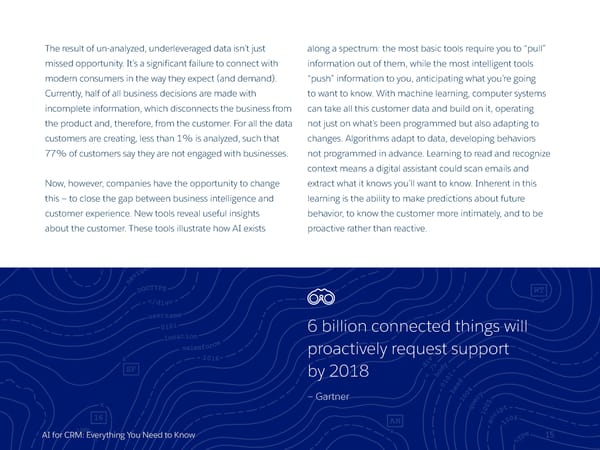The result of un-analyzed, underleveraged data isn’t just along a spectrum: the most basic tools require you to “pull” missed opportunity. It’s a significant failure to connect with information out of them, while the most intelligent tools modern consumers in the way they expect (and demand). “push” information to you, anticipating what you’re going Currently, half of all business decisions are made with to want to know. With machine learning, computer systems incomplete information, which disconnects the business from can take all this customer data and build on it, operating the product and, therefore, from the customer. For all the data not just on what’s been programmed but also adapting to customers are creating, less than 1% is analyzed, such that changes. Algorithms adapt to data, developing behaviors 77% of customers say they are not engaged with businesses. not programmed in advance. Learning to read and recognize context means a digital assistant could scan emails and Now, however, companies have the opportunity to change extract what it knows you’ll want to know. Inherent in this this — to close the gap between business intelligence and learning is the ability to make predictions about future customer experience. New tools reveal useful insights behavior, to know the customer more intimately, and to be about the customer. These tools illustrate how AI exists proactive rather than reactive. 6 billion connected things will proactively request support by 2018 — Gartner AI for CRM: Everything You Need to Know 15
 AI for CRM Page 14 Page 16
AI for CRM Page 14 Page 16